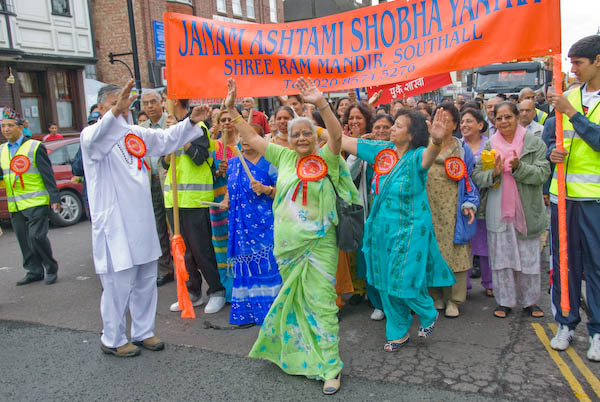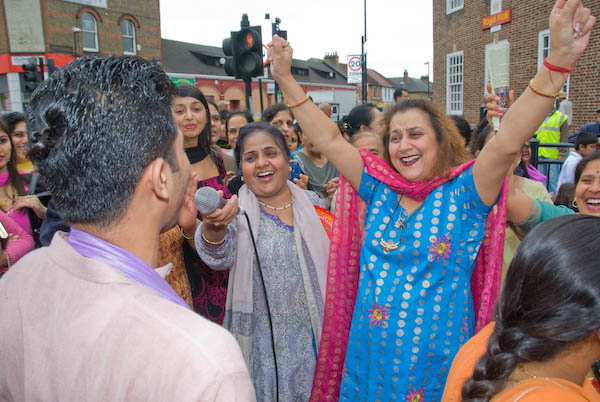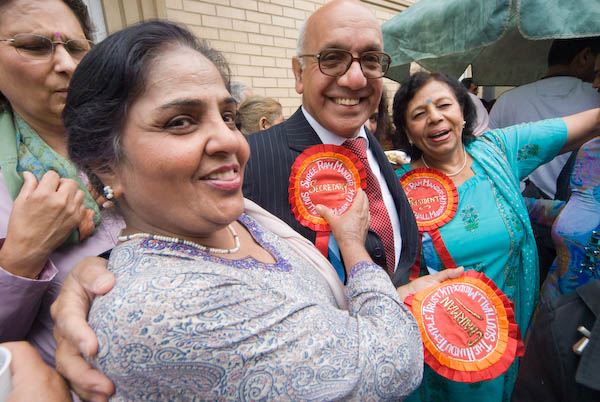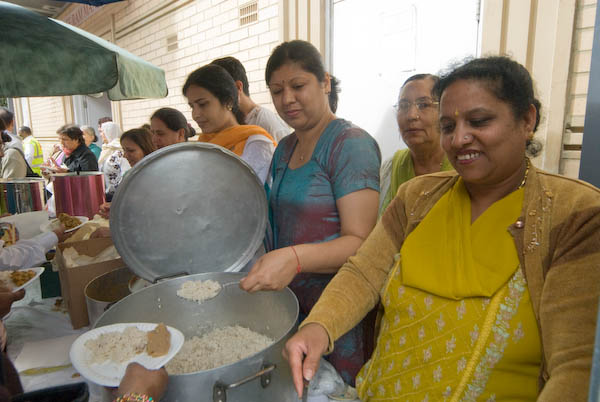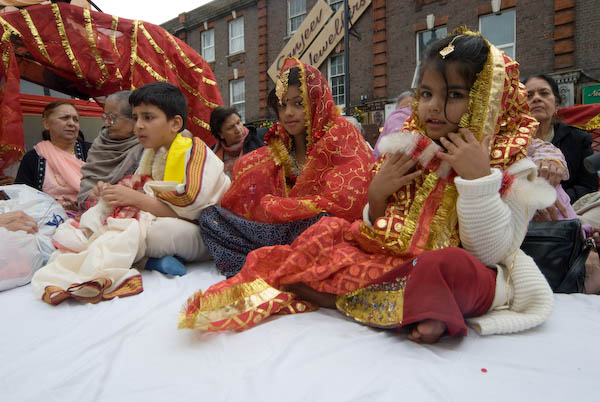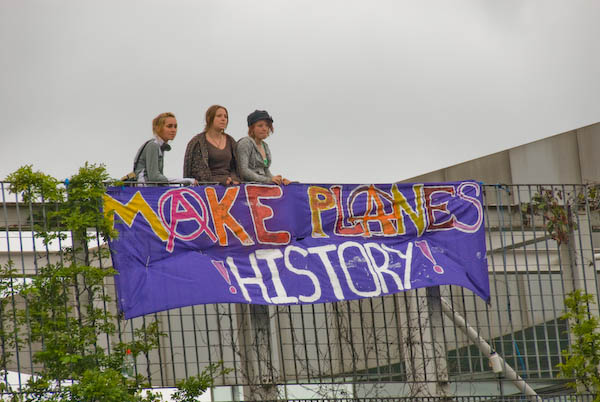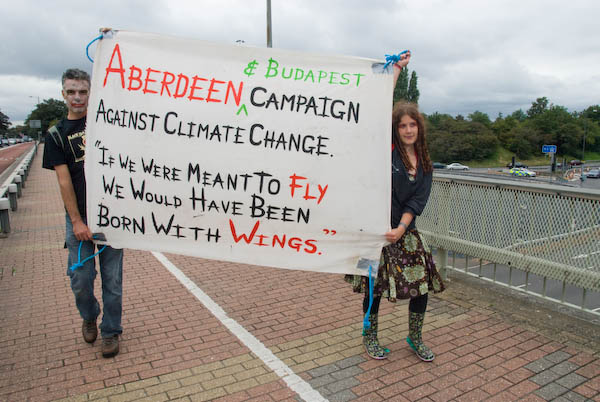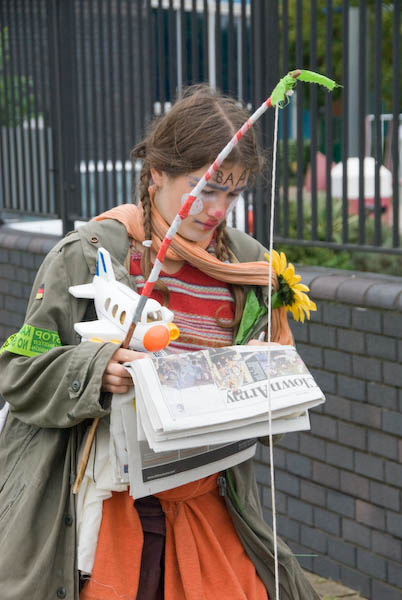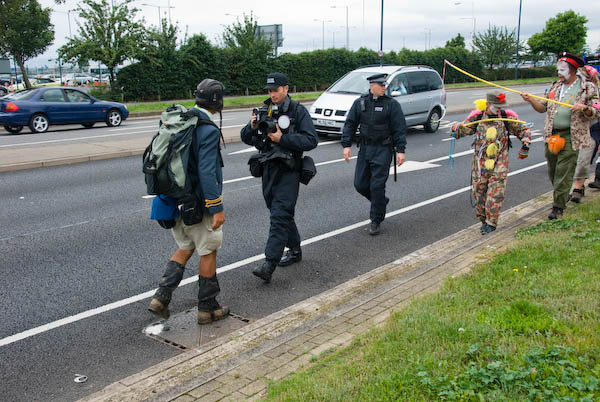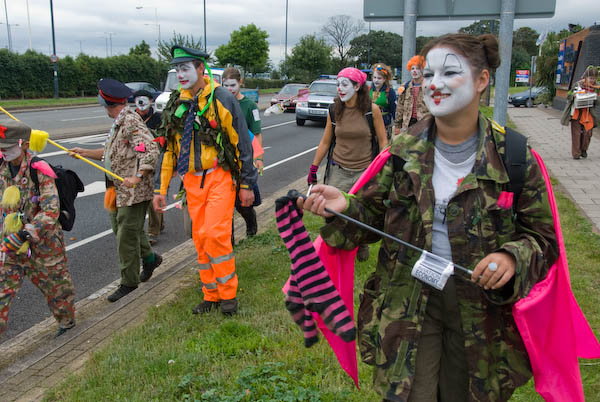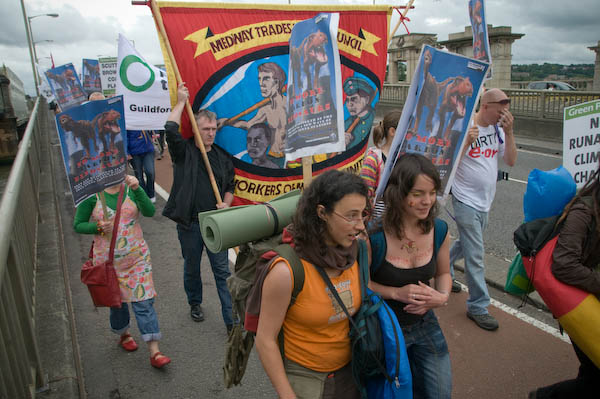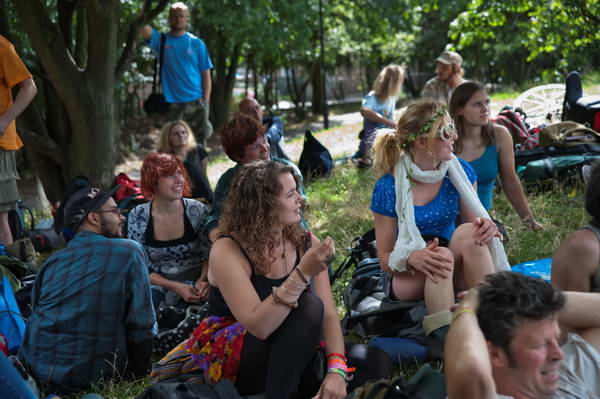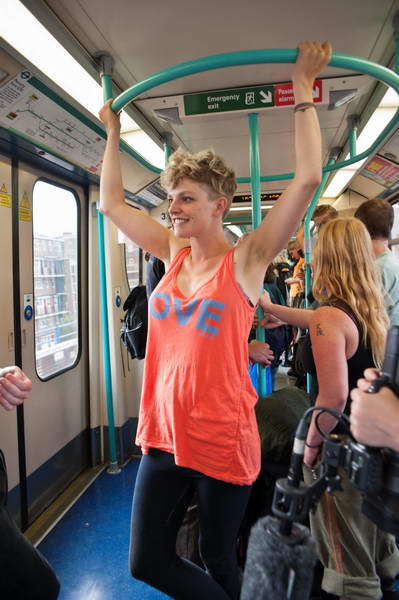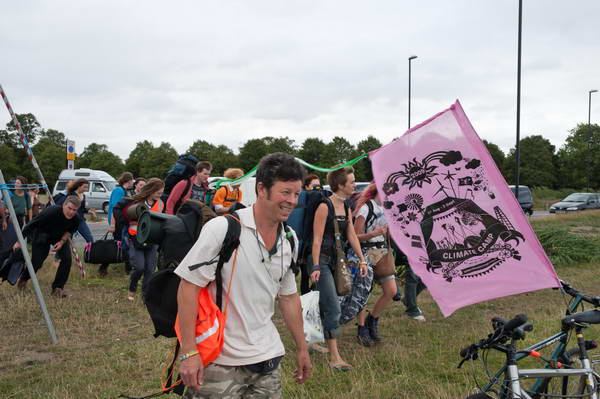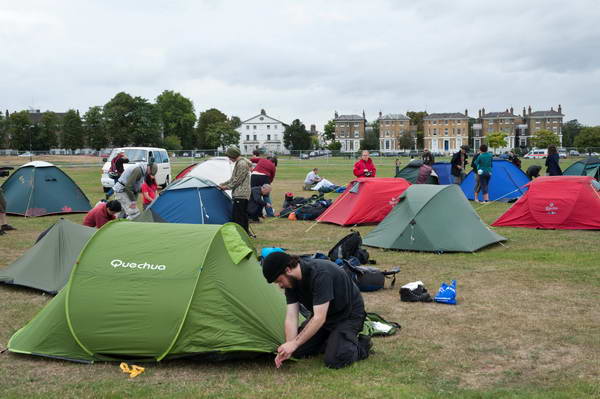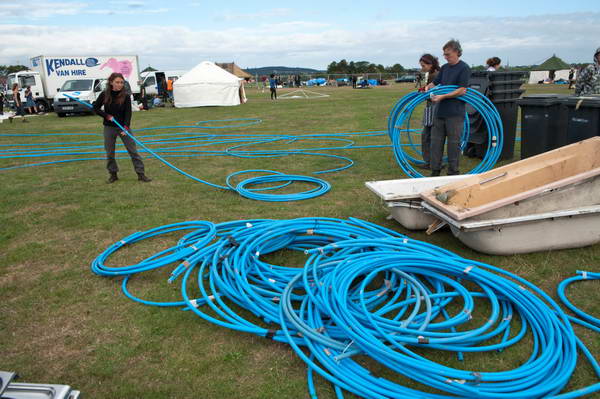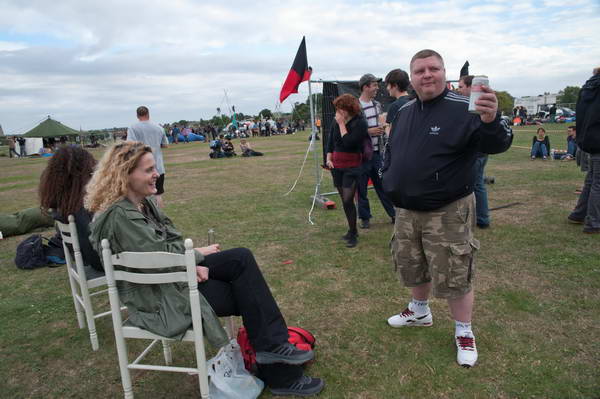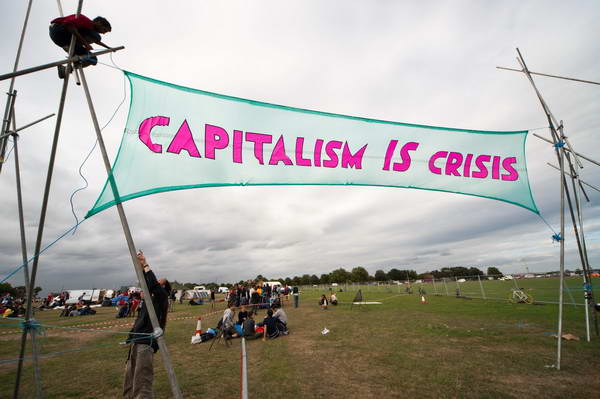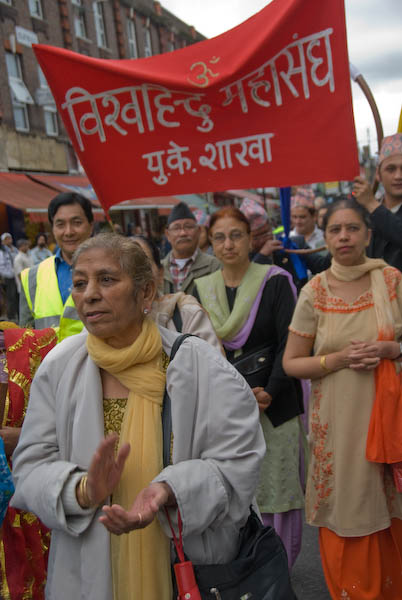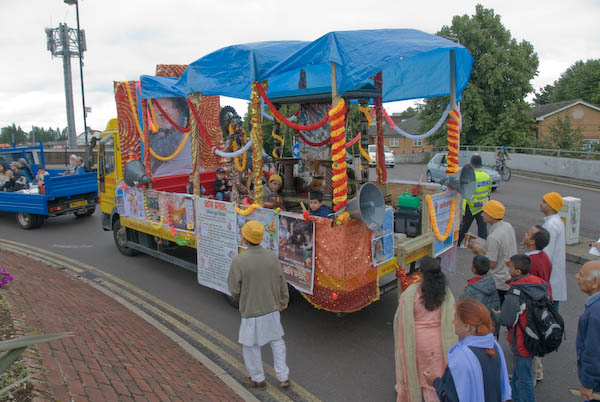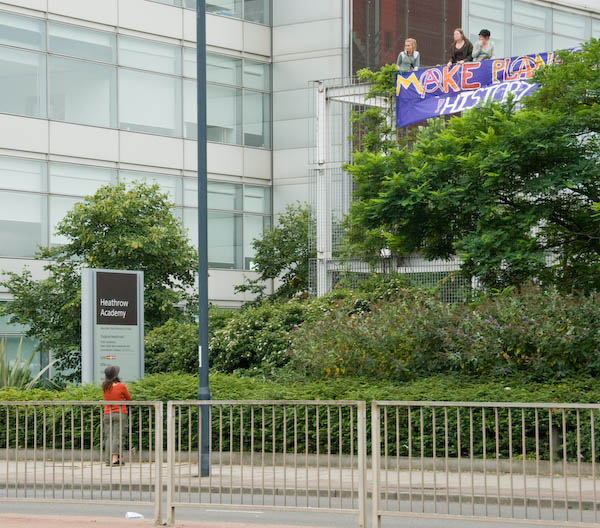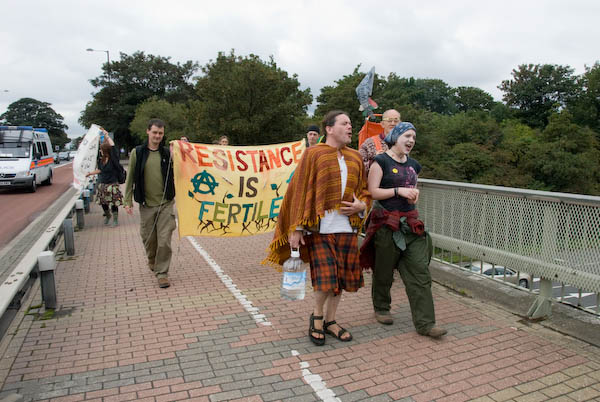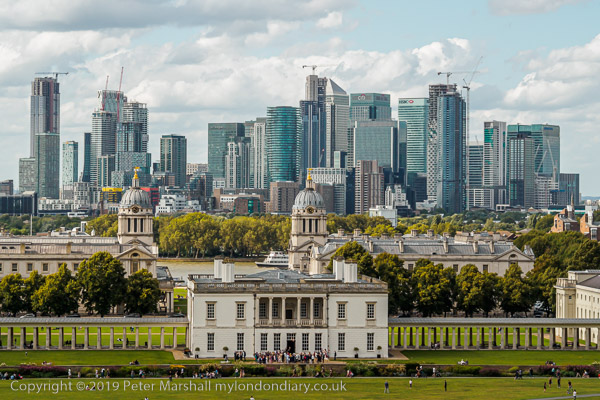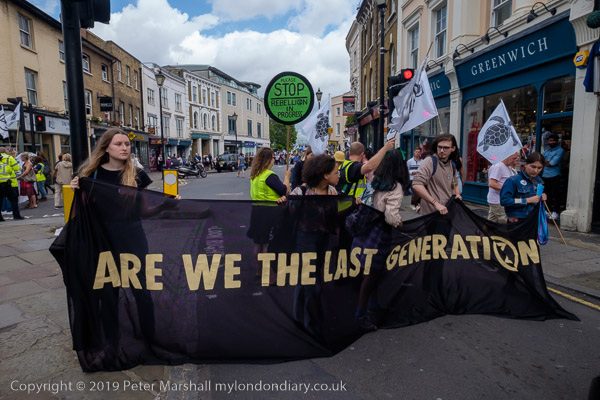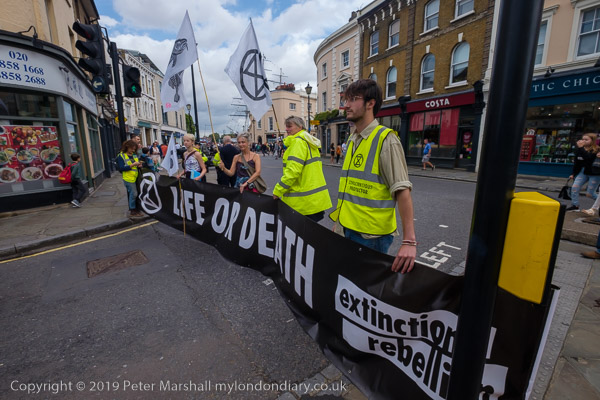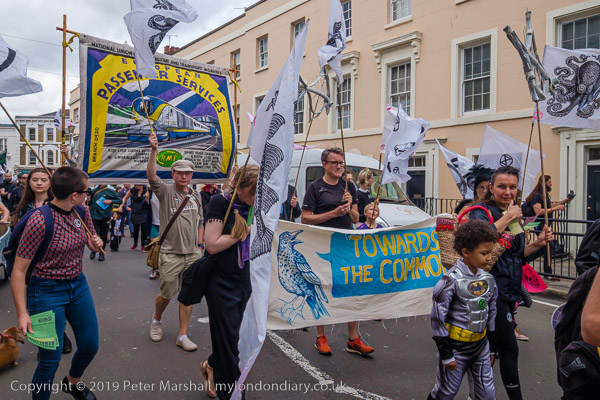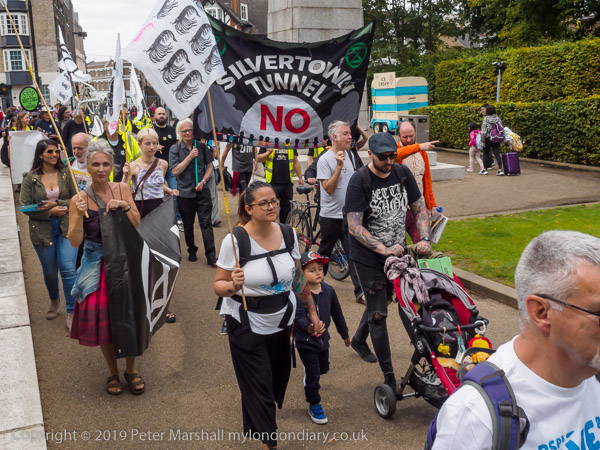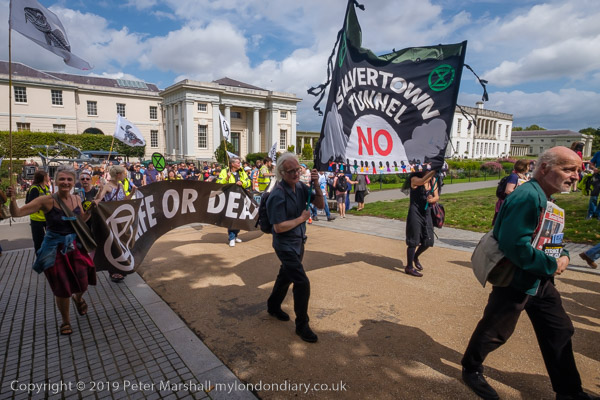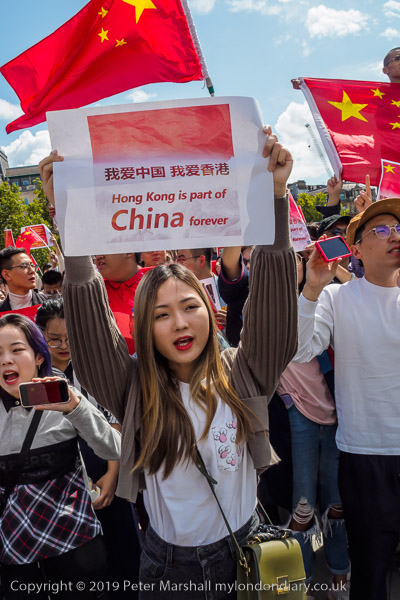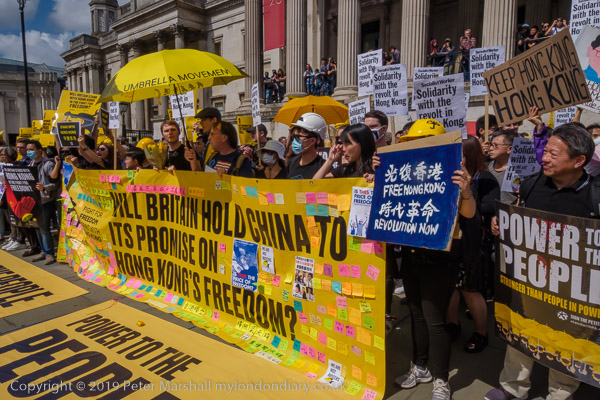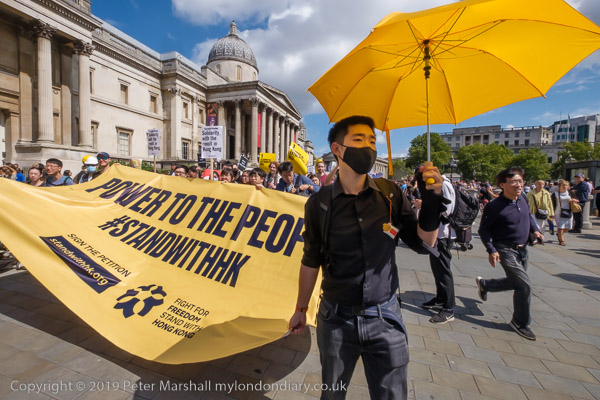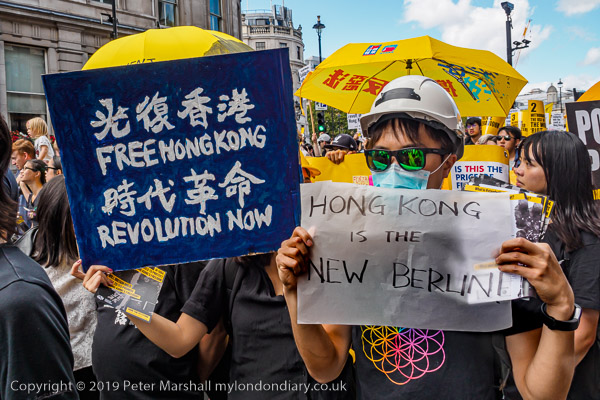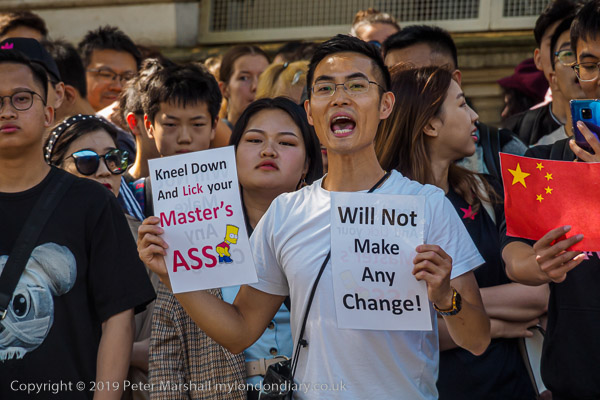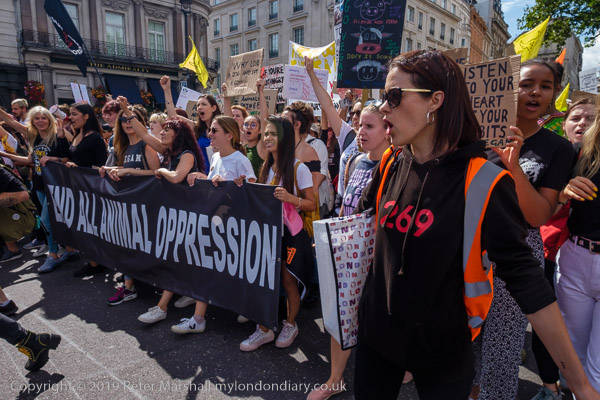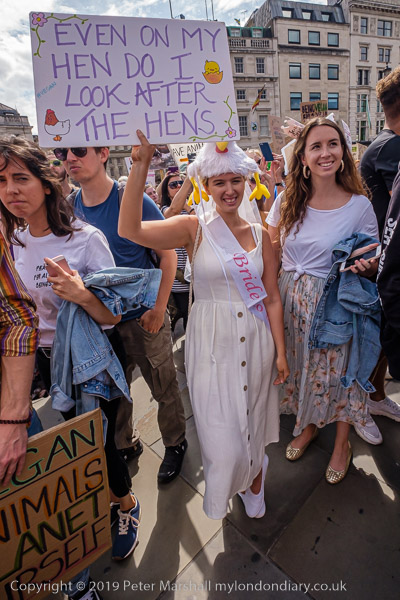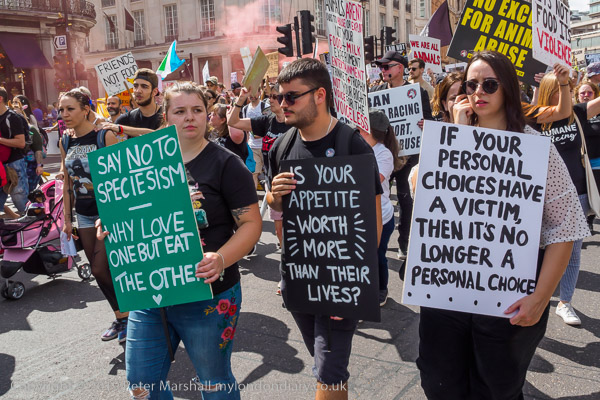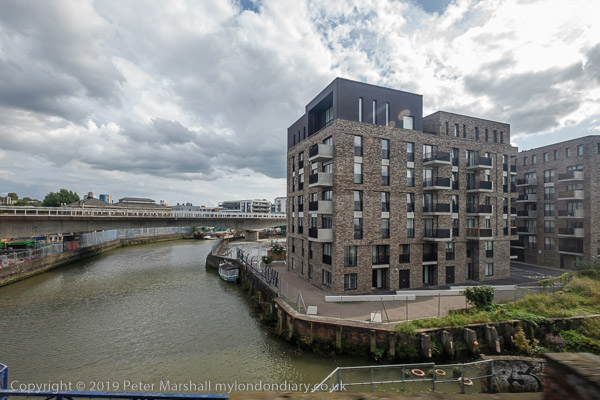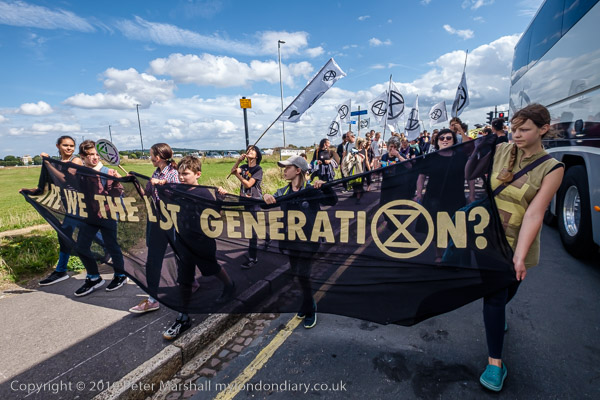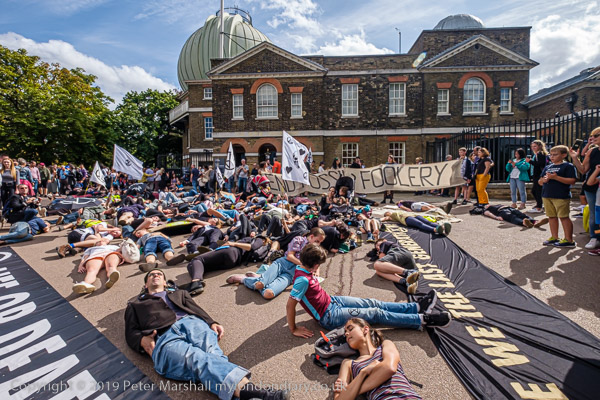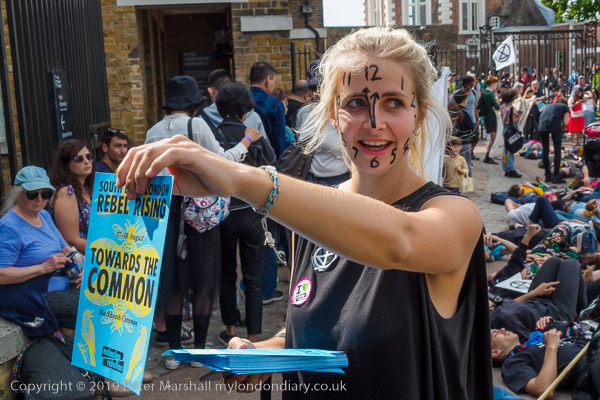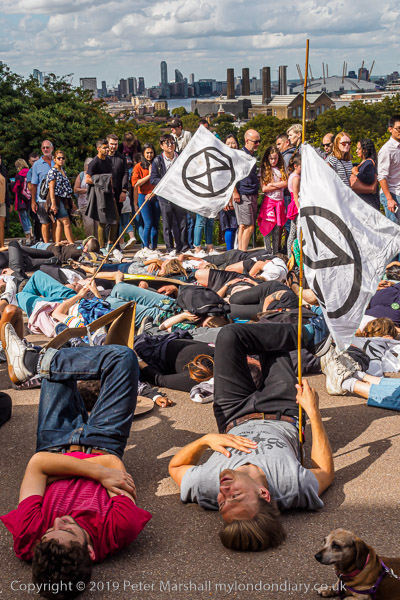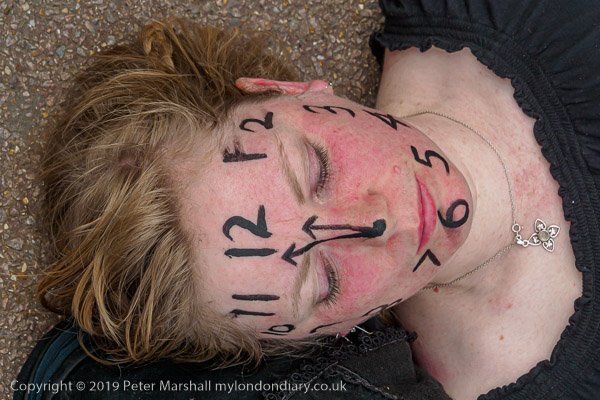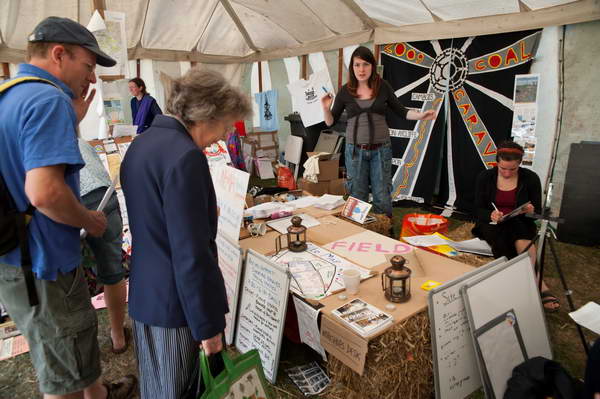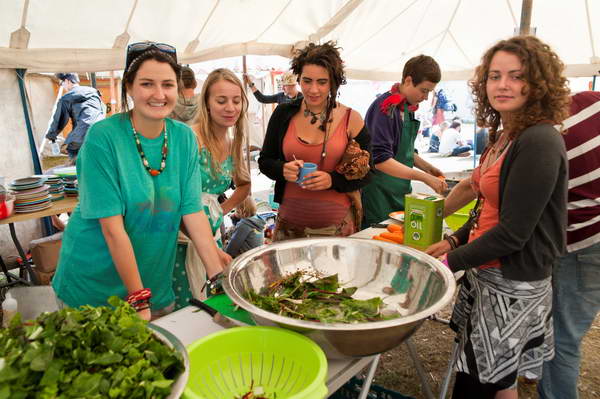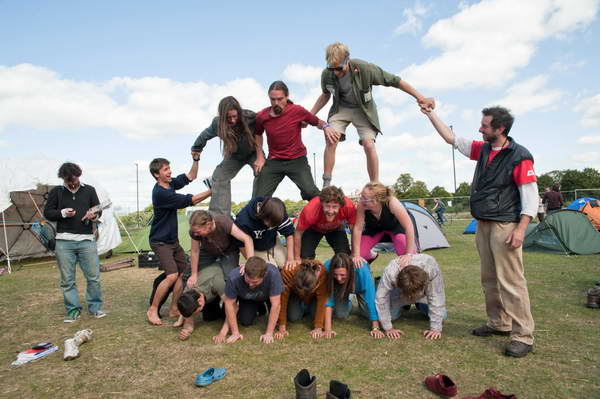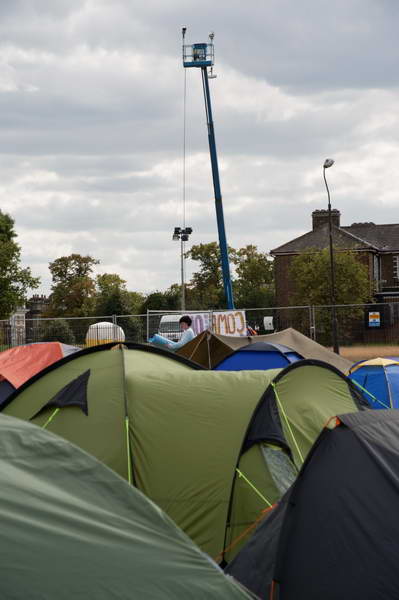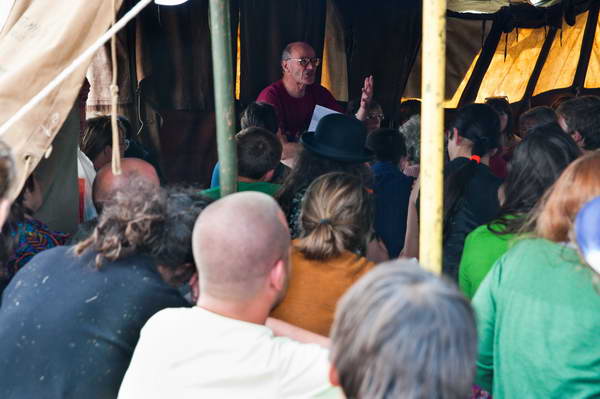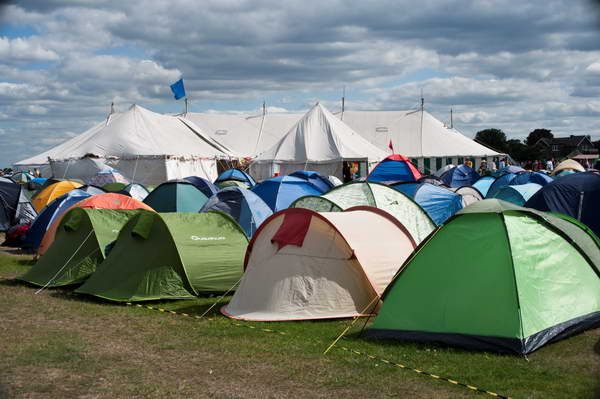Climate Camp at Blackheath – Wednesday 26th August 2009
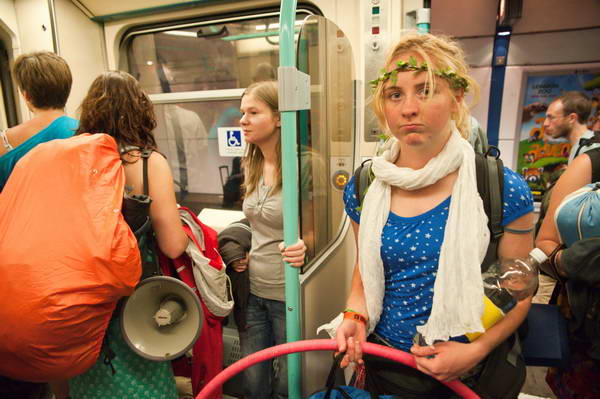
On Wednesday 26 August 2009 I joined Climate Campers who were meeting at several locations around London to go to an as yet unspecified location for that year’s Climate Camp.
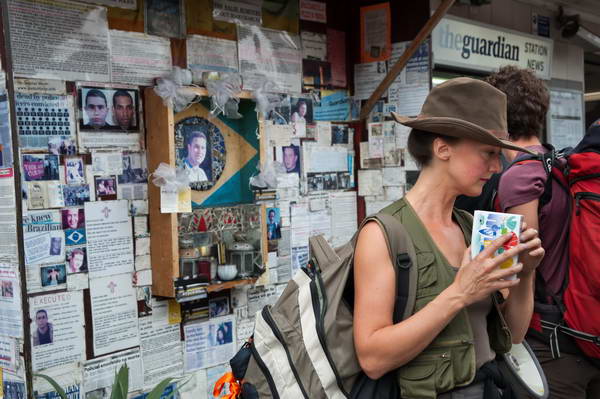
I’d chosen to go with the Blue Group who were meeting at Stockwell Underground Station in south London, chosen as one of the starting points because of the events of 22 July 2005.

As I wrote back then, on “the escalator at Stockwell station it’s hard not to shiver at the memory of those videos showing Jean Charles de Menezes strolling down to catch his last train, and police coming though the gates in pursuit. There is a memorial to him outside the station, including a great deal of information about the event and the misinformation and covering up by police.“

Arriving there I found around 80 Climate Campers and half a dozen police being filmed and photographed by around 30 media and nothing very much happening. It was like that for the next couple of hours, during which we all went to a local park to have our sandwiches and some played games.

Eventually around 2pm we were called back to the station where we followed the leader who had a blue flag onto a train and off at Bank, where all trooped to the DLR, alighting at Greenwich. From here we trudged up the hill to Blackheath Common. Police were keeping a low profile, watching from a distance.
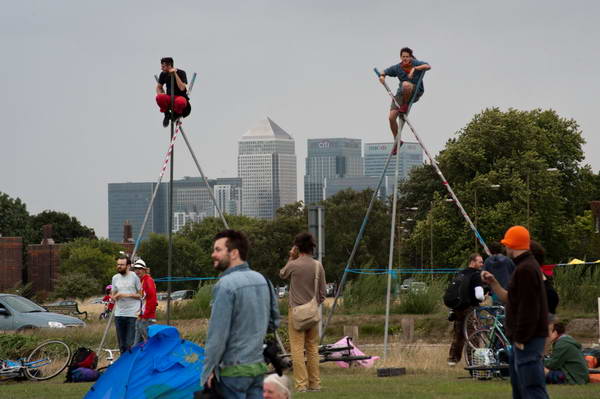
When we arrived the site on the common was still being secured and some people were hard at work erecting fences and vital resources – such as toilets. Legal observers were holding a meeting, but others were just making use of some comfortable furniture on the site or listening to singers.
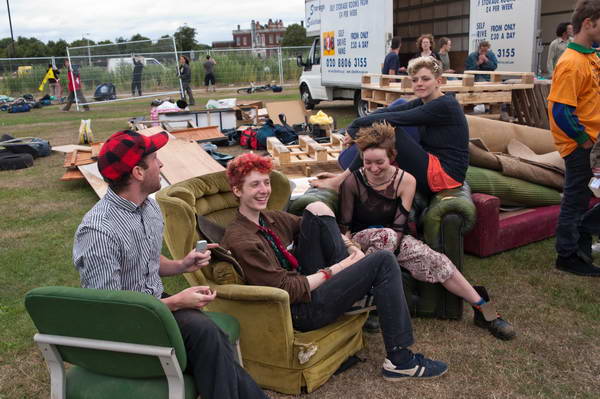
I tried to photograph as many of these activities as I could.
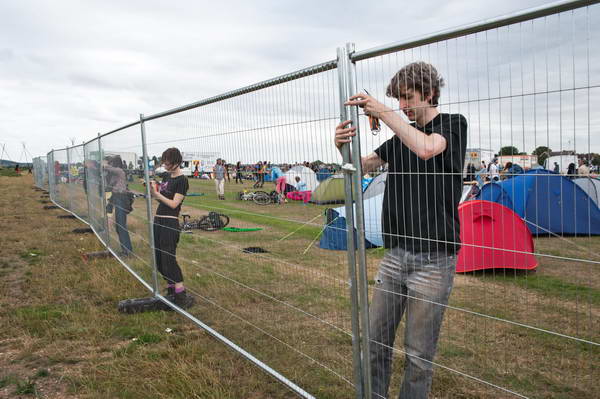
In earlier years I’d had problems with Climate Camp and in particular their media policy. As I wrote “Press photographers visiting the site will be required to sign a media policy that most of us would find unacceptable and to be accompanied while on the site by a minder. (It can’t of course apply to the police photographers in their helicopter or cherry picker.) The policy appears to be driven by a few individuals with paranoid ideas about privacy and a totally irrational fear of being photographed. It really does not steal your soul!“

On the Wednesday the camp was still being set up and everyone had unfettered access. But this year in any case I’d actually been invited to take part as part of the media team for the camp – and on my later visit was provided with a sash to identify me as such – though I did still come across a little of that paranoia even when wearing it.

But there were also so many people I knew and others who recognised me from from other events that I felt very much at home walking around the site. The main problem I had was trying to keep moving rather than being drawn into lengthy conversations.
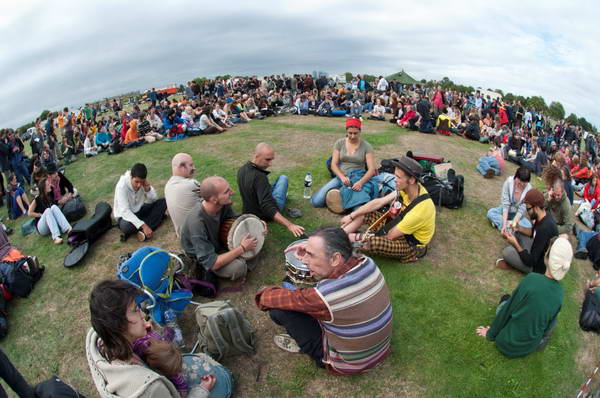
There was a meeting to welcome us all to the Climate Camp, after which the preparations for the camp continued, with water supplies being laid on, even baths plumbed in, various larger tents being erected as well as a large banner CAPITALISM IS CRISIS.
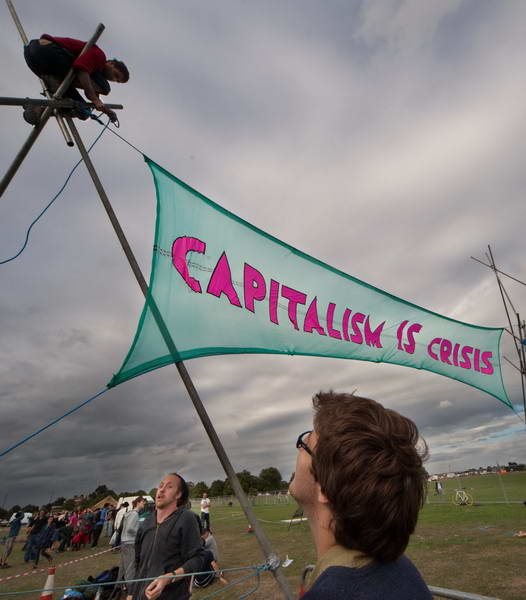
I had other things to do on the Friday and Saturday, but was able to return for a day at the camp on the Saturday, to make a record of the camp’s activities and of the campers at work and play, as well as some of the visitors who came to see what was happening. You can see my accounts and pictures from both days on My London Diary.
More on My London Diary:
Climate Camp: Blue Group Swoop
Climate Camp: Setup
Climate Camp: Saturday
Flickr – Facebook – My London Diary – Hull Photos – Lea Valley – Paris
London’s Industrial Heritage – London Photos
All photographs on this page are copyright © Peter Marshall.
Contact me to buy prints or licence to reproduce.
